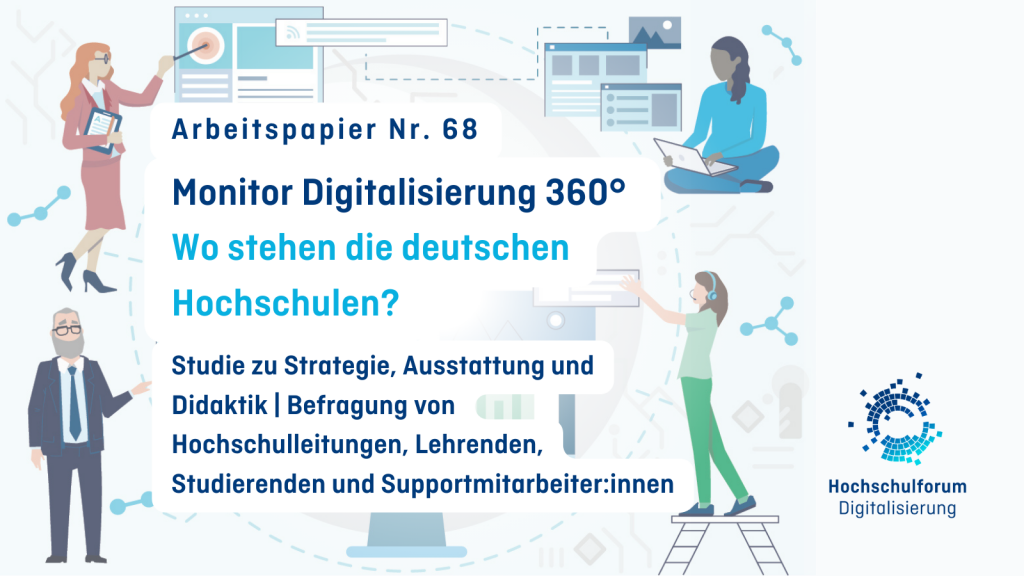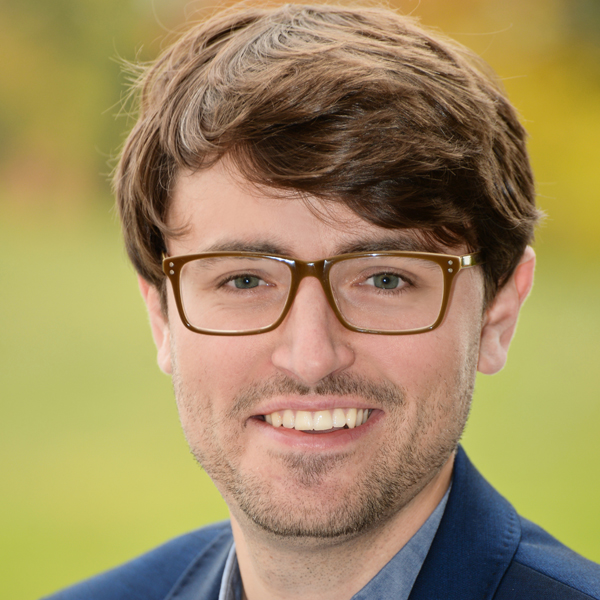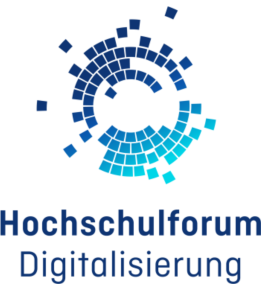Monitor Digitalization 360° – Where do German universities stand?
Whether seminar, tutorial or lecture – after the Corona pandemic, face-to-face events are once again the dominant teaching formats on campus. This is shown by a recent survey conducted as part of the new Monitor Digitalisierung 360° by the Hochschulforum Digitalisierung. A total of more than 1,600 university employees were contacted for the study. The survey of university administrators, students, teachers and support staff also shows that digitization is now a matter for the boss at almost all universities. The technical equipment is rated as sufficient by students and teachers. WLAN coverage remains a weak point at some university locations. Teachers lack time for continuing education, students want a more interactive and multimedia learning experience.

Face-to-face teaching predominant again
After the end of the Corona measures, most events at German universities are again held in presence. About half of all faculty surveyed are offering seminars exclusively on campus this summer semester. For small group instruction, such as tutorials or colloquia, the percentage is similar. Only eight percent of instructors also give online seminars. However, compared to previous surveys on the topic, classroom teaching is increasingly being enriched with digital media, and the use of mixed formats (such as blended learning) continues to rise. Students welcome such offerings. Two-thirds would like to see more interactive and multimedia teaching, in addition to hybrid synchronous formats (such as being plugged into the lecture). 85.1 percent of university administrations state that they want to improve the participation of a diverse student body with the help of digitization in teaching and learning.
The Monitor Digitization 360 shows: In recent years, progress has been made in digitization at German universities. Almost all universities now have a strategy for digitization in teaching and learning. University leaders have the issue on their agendas and see themselves leading the charge.
Technical equipment: Basically sufficient, WLAN expandable
The state of implementation is heterogeneous. Only 18.7 percent of the teachers consider the technical equipment to be generally inadequate. Above all, WLAN coverage on campus appears to be in need of improvement: More than a third of the students and lecturers state that the WLAN is not sufficient at peak times. In terms of digitized teaching-learning settings, a lot has been possible since the Corona pandemic that was unthinkable just a few years ago. Accordingly, many universities now have the option of offering digitally enriched teaching or even hybrid and blended learning settings. However, face-to-face teaching remains the predominant form of teaching – regardless of whether seminars, lectures or tutorials are involved.
There is no time for further training
In order to achieve further progress in digitization in teaching and learning, the monitor shows future goals and levers. When asked, 74.6 percent of university leaders believe that the digitization of teaching and learning is important for preparing students for a digitized world of work. Appropriate further training opportunities for university lecturers with regard to digital learning content and formats would be important, not least in view of the shortage of skilled workers. The study shows: 84.8 percent of teachers are motivated to continue their education – but according to a large majority of university administrators and support staff, they lack the time to do so. There is also a need for action with regard to the spatial equipment on campus. For example, the survey results suggest that diverse learning spaces (self-study spaces, maker spaces, group study rooms) are increasingly available or planned at universities, but would need to be expanded further to meet current needs.
Even before discussions surrounding ChatGPT, caution prevails in digital exams: 79.5 percent of instructors see dealing with cheating attempts as a key challenge, and oral online exams are accordingly the most popular.
Overall, the Monitor shows that German universities have laid the groundwork in recent years to enable digital (and digitally supported) teaching formats. Not least due to the Corona pandemic, largely all teachers have gained experience of digitization in studying and teaching. How digital teaching will be implemented in the future remains to be seen: 76.4 percent of students think that changes resulting from the Corona pandemic will not continue and that face-to-face teaching will remain the “new” normal.
To the monitor
The monitor on the status of digitization in teaching and learning at German universities was designed as a “360-degree survey”. Between mid-June and the end of October 2022, four different target groups – university management (n=74), support (n=127), teaching staff (n=399) and students (n=1,008) – were surveyed on didactic formats, spatial infrastructure, concrete support services through to strategic developments at German universities in order to obtain as holistic a view of the topic as possible. The planned repetition of the survey in about two years will then also allow changes and emerging developments to be identified. The study was conducted by the mmb Institute on behalf of the CHE Centre for Higher Education for the Hochschulforum Digitalisierung.
Contact
 Julius-David Friedrich
Julius-David Friedrich
